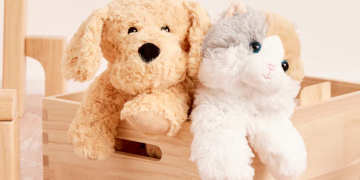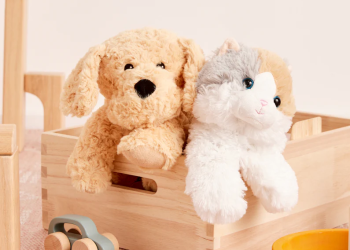Positive reinforcement training is a highly effective and humane approach to teaching pets desired behaviors by rewarding them for doing the right thing. This method builds trust, fosters a strong bond between you and your pet, and encourages them to learn willingly. Whether you’re training a dog, cat, or even a bird, positive reinforcement can transform your pet’s behavior and enhance your relationship. Here’s a detailed guide to help you understand and apply this powerful training method.
What Is Positive Reinforcement Training?
Definition
Positive reinforcement training involves rewarding your pet immediately after they perform a desired behavior. The reward reinforces the action, making it more likely that your pet will repeat it in the future.
Key Principles
- Timing: The reward must follow the behavior immediately so your pet can associate the two.
- Consistency: Regularly reinforcing the desired behavior ensures your pet understands what is expected.
- Motivation: Rewards should be something your pet values, such as treats, toys, or praise.
Benefits of Positive Reinforcement
Builds Trust
By focusing on rewards rather than punishment, positive reinforcement fosters a trusting relationship between you and your pet.
Encourages Willing Participation
Pets are more likely to engage and learn when they know good behavior is met with positive outcomes.
Reduces Stress
This method minimizes fear and anxiety, creating a safe learning environment for your pet.
Versatility
Positive reinforcement can be used to teach basic commands, correct unwanted behaviors, and even train complex tricks.
Getting Started with Positive Reinforcement
Choose Rewards
- High-Value Treats: Small, tasty treats work well for most pets.
- Toys: Interactive toys can be motivating, especially for high-energy pets.
- Verbal Praise: A cheerful “good job!” or “yes!” reinforces behavior for pets who thrive on attention.
Establish a Marker
A marker helps your pet identify the exact moment they performed the correct behavior:
- Clicker: A handheld clicker makes a distinct sound that marks the behavior.
- Verbal Marker: Use a consistent word or phrase, like “yes” or “good,” as a marker.
Set Clear Goals
- Focus on one behavior at a time to avoid overwhelming your pet.
- Break complex behaviors into smaller steps and reward incremental progress.
Training Techniques
Capturing
- Watch for your pet to perform a desired behavior naturally, such as sitting or lying down.
- Immediately mark the behavior and reward it.
- Repeat consistently to encourage the behavior.
Luring
- Use a treat to guide your pet into the desired position or action.
- For example, hold a treat above your dog’s nose to encourage them to sit.
- Mark and reward when they complete the action.
Shaping
- Break a complex behavior into smaller steps and reward each step.
- Gradually increase the criteria for rewards until your pet performs the full behavior.
- For example, teaching a dog to lie down might involve first rewarding them for lowering their head, then for bending their legs, and finally for lying down completely.
Target Training
- Teach your pet to touch a target object, such as your hand or a stick.
- Use the target to guide them into specific behaviors or positions.
Common Behaviors to Teach
Basic Commands
- Sit: Hold a treat above your pet’s nose and move it back to guide them into a sitting position. Mark and reward immediately.
- Stay: Ask your pet to sit, then hold your hand up and say “stay.” Reward them for remaining in place, gradually increasing the duration.
- Come: Call your pet’s name followed by “come.” Reward them when they approach you.
House Training
- Reward your pet immediately after they eliminate in the correct spot.
- Use a consistent cue, such as “go potty,” to encourage them.
Reducing Undesirable Behaviors
- Redirect your pet’s energy toward acceptable behaviors and reward them for making the right choice.
- For example, if your dog jumps on guests, teach them to sit instead and reward them for staying seated.
Tips for Success
Timing Is Everything
Mark the desired behavior the moment it occurs. Delayed rewards may confuse your pet.
Use High-Value Rewards
Identify what motivates your pet most. Some may prefer treats, while others respond better to toys or affection.
Keep Sessions Short
Training sessions should be 5–10 minutes long to maintain your pet’s focus and enthusiasm.
Be Patient
Learning takes time, and mistakes are part of the process. Stay calm and consistent, and celebrate small victories.
Gradually Reduce Rewards
Once your pet consistently performs a behavior, begin to phase out treats and replace them with verbal praise or occasional rewards.
Addressing Challenges
Lack of Interest
- Ensure your pet is hungry, energetic, or otherwise motivated before training.
- Use more enticing rewards if they seem uninterested.
Distractions
- Begin training in a quiet, distraction-free environment.
- Gradually introduce distractions as your pet masters the behavior.
Over-Reliance on Treats
- Gradually transition to intermittent rewards, so your pet learns to perform behaviors without expecting a treat every time.
Expanding Skills
Advanced Tricks
- Once your pet masters basic commands, teach fun tricks like “roll over,” “high five,” or “spin.”
Agility Training
- Positive reinforcement is excellent for guiding pets through obstacle courses or teaching agility skills.
Real-Life Applications
- Use commands in daily life, such as asking your dog to sit before meals or stay while you open the door.
When to Seek Professional Help
If you encounter persistent challenges or want to train advanced behaviors, consider working with a professional trainer or behaviorist. They can provide tailored advice and strategies to ensure success.
Positive reinforcement training is a compassionate and effective way to teach your pet new skills while strengthening your bond. By focusing on rewards and creating a supportive learning environment, you can help your pet thrive and enjoy a lifetime of good behavior.












